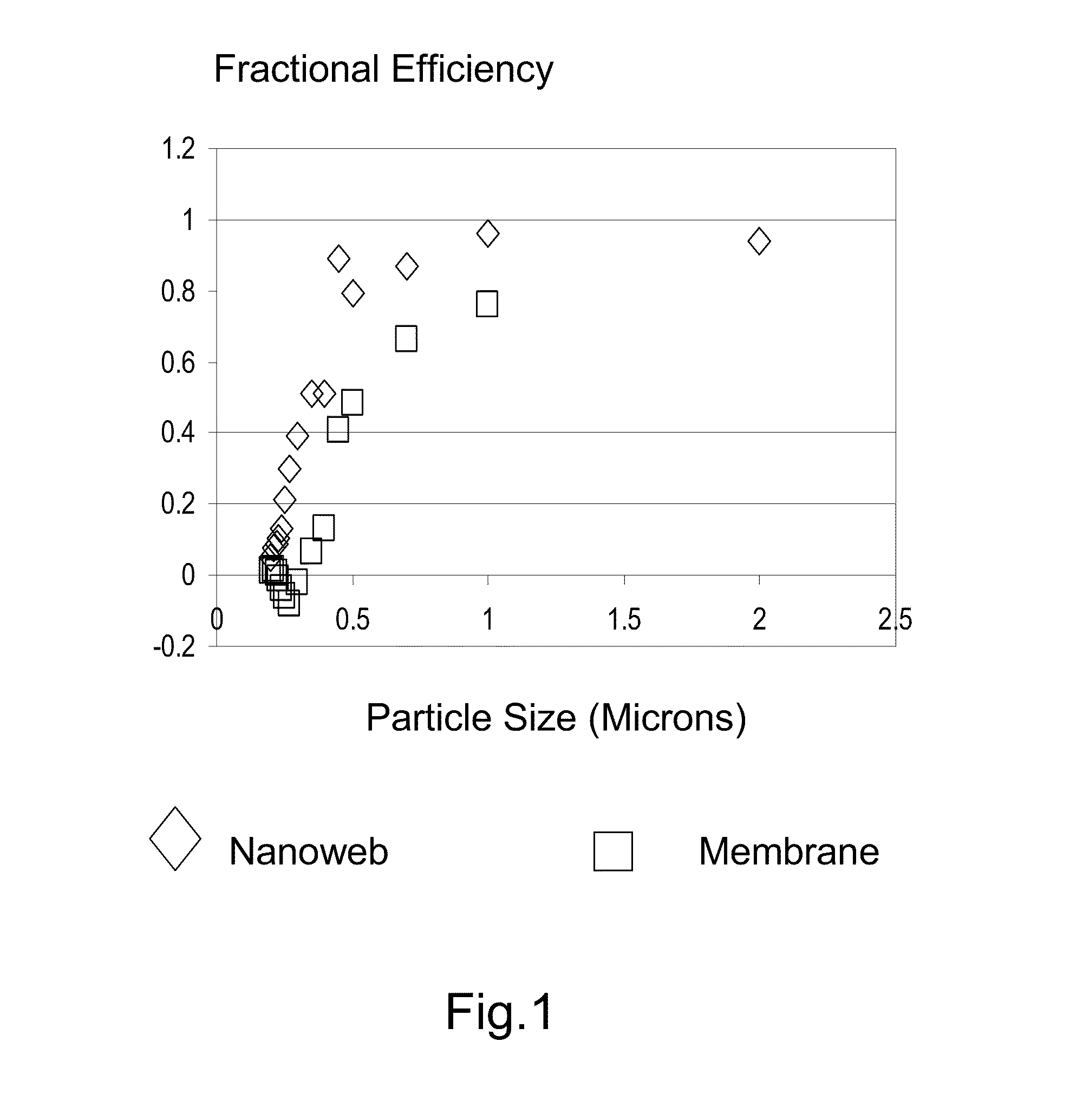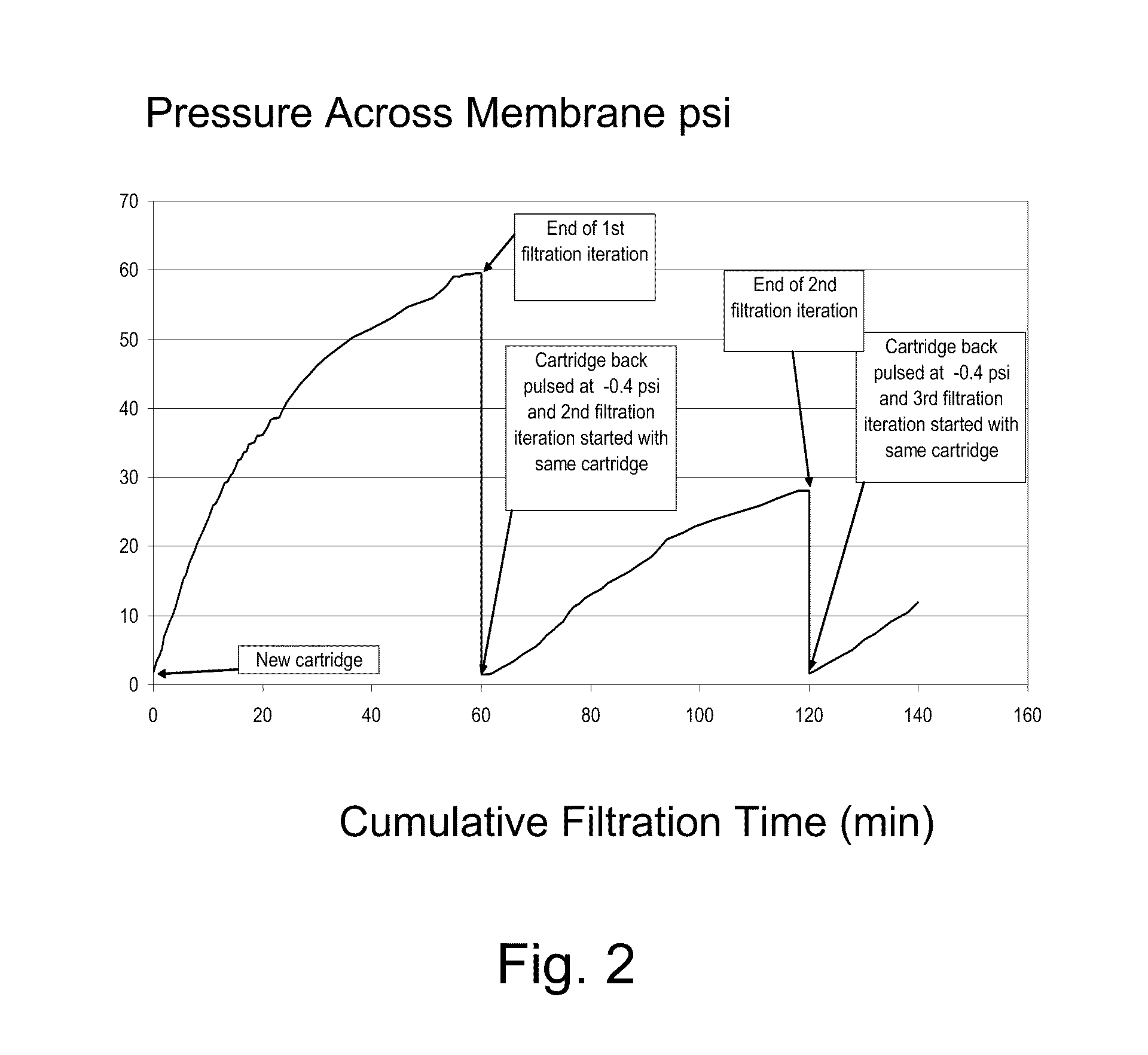Filters for selective removal of large particles from particle slurries
- Summary
- Abstract
- Description
- Claims
- Application Information
AI Technical Summary
Benefits of technology
Problems solved by technology
Method used
Image
Examples
examples
[0045]A 24% solution of polyamide-6,6 in formic acid was spun by electroblowing as described in WO 03 / 080905. The number average fiber diameter for Example 1 was about 420 nm. The as-spun media in Example 1 was co-pleated between two scrims of spunbond media for support. The pleated media was converted to a standard 222 10″ cartridge with approximately seven square feet of surface area of the media.
[0046]The media for Example 2 was calendered from Example 1. The nanofiber sheets of Examples 1 were calendered by delivering the nanofiber sheets to a two roll calender nip from an unwind. A device for spreading the sheet prior to the nip was used to maintain a flat, wrinkle free sheet upon entering the nip. The hard roll was a 16.04 inch (40.74 cm) diameter steel roll, and the soft roll was a cotton-wool composite roll having a Shore D hardness of about 78, and about 20.67 inches (52.50 cm) in diameter. The media were calendered with the steel roll heated to 150° C. and at line speed of...
PUM
| Property | Measurement | Unit |
|---|---|---|
| Length | aaaaa | aaaaa |
| Length | aaaaa | aaaaa |
| Length | aaaaa | aaaaa |
Abstract
Description
Claims
Application Information
 Login to View More
Login to View More - R&D
- Intellectual Property
- Life Sciences
- Materials
- Tech Scout
- Unparalleled Data Quality
- Higher Quality Content
- 60% Fewer Hallucinations
Browse by: Latest US Patents, China's latest patents, Technical Efficacy Thesaurus, Application Domain, Technology Topic, Popular Technical Reports.
© 2025 PatSnap. All rights reserved.Legal|Privacy policy|Modern Slavery Act Transparency Statement|Sitemap|About US| Contact US: help@patsnap.com


